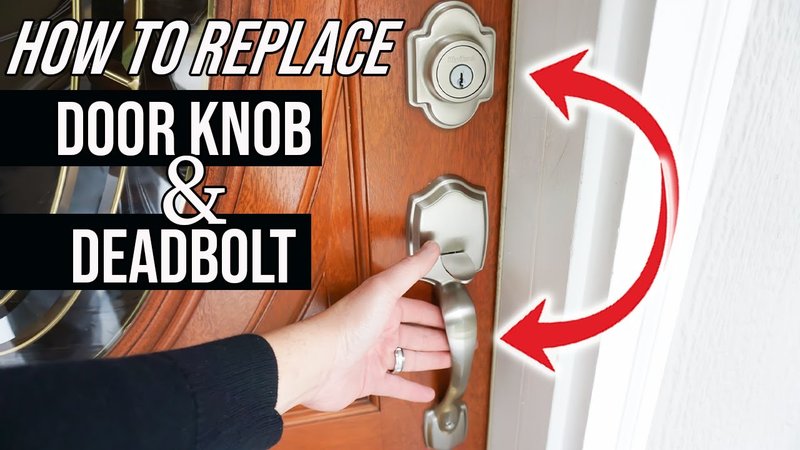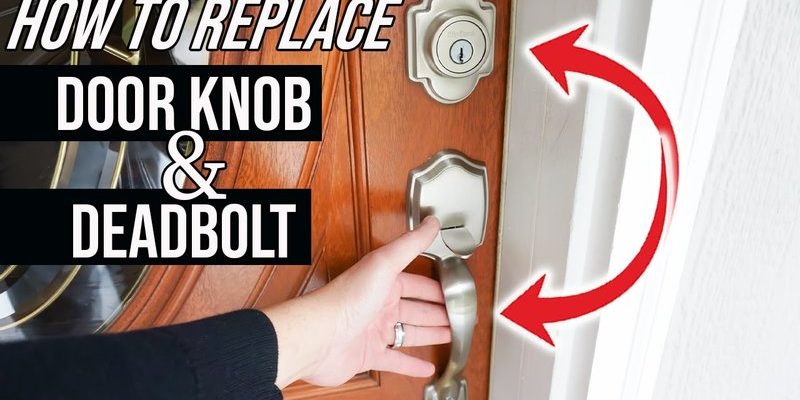
Honestly, modern keypad locks and smart door handles are a huge upgrade from jangling old keyrings. They make things simple until, for whatever reason, they don’t respond. Whether you’ve got a Yale Assure, Schlage Encode, or August Smart Lock, the basic troubleshooting steps are pretty similar. You don’t need an engineering degree—you just need some patience, a screwdriver, and maybe a fresh set of batteries. Let’s break down what’s likely going wrong, why your lock might suddenly play dead, and how you can (usually) bring it back to life without calling a locksmith.
Check The Obvious: Power and Battery Issues
Here’s the thing: almost every non-responsive electronic handleset is just plain out of juice. Even the fanciest locks like Schlage, Yale, and Kwikset won’t do a thing if their battery has run dry. Sometimes it’s hard to believe something as simple as dead batteries can cause so much hassle, but it’s surprisingly common. If your keypad doesn’t light up or beep, start by popping off the battery cover—usually on the inside part of the door.
If you see corrosion, leaking, or batteries that look old, swap them out for a fresh set (and always match the correct size and voltage—most use AA or 9V batteries). The lock should power up right away, maybe even run a little startup tune or flash its lights. Still dead? Try a different brand of batteries; sometimes “dollar store” batteries just don’t have enough power. If your lock powers up but is sluggish, that’s still a sign you need a new pack.
For smart locks with mobile apps or Wi-Fi, check for a “low battery” alert. Some systems warn you on your phone before things go dark. If you only replace one or two batteries in a set, or install them backwards, you’ll still have trouble—so double-check the orientation and swap them all at once for best results.
Is It The Code or Keypad?
You might be wondering, was it something you pressed? A lot of people panic when their lock won’t open, thinking maybe they forgot the right user code or jammed the keypad. Don’t worry—these things happen. Most locks have built-in lockout features to prevent guessing, so if you enter the wrong code too many times, the handle might ignore you for a few minutes (like a toddler throwing a tantrum).
Start by entering your code slowly, watching for the usual feedback—beeping, blinking lights, or a green checkmark. If nothing happens when you press the buttons, that points to a power issue (see above), or possibly a stuck or damaged keypad. If you get error flashes or red lights, try waiting 30-60 seconds before attempting again. Still not working? Pull out your phone (if your lock supports Bluetooth or Wi-Fi pairing) and see if you can unlock it remotely. If digital or app control works but the keypad doesn’t, you know the problem is with the hardware buttons, not the software.
If you recently changed your master code, let’s be real—it’s easy to mix it up. Double-check your notes or user manual to confirm you’re not making a simple typo. Each brand has its own “reset” or “admin” code process. Sometimes the lock needs to be put in programming mode first.
Reset and Re-Pair: Software and Sync Problems
Here’s where things get a little techy, but don’t worry—I’ll walk you through it. Smart locks can act up if they lose their wireless connection, forget their programming, or need a reset after a firmware update. If your lock worked yesterday but is silent today, it might be “out of sync” with your phone or the central hub. Common symptoms include: the app showing “offline,” error codes, or the lock ignoring both keypad and remote commands.
Most brands include a tiny reset or “program” button on the inside panel. For example, Yale locks usually have a button under the battery cover, while Schlage often hides theirs near the lower edge. Holding this button for 10–15 seconds typically forces a hard reset. You might hear a series of beeps or see a light show—the lock is clearing its memory and ready to re-pair.
Next, open your app and follow the steps to “add device” or “pair lock.” You may need to scan a QR code or enter a unique code from the back of the lock. Sometimes it helps to stand closer to your home Wi-Fi or move devices nearby. Don’t skip the pairing step, or the lock may just sit there, doing nothing. If you changed Wi-Fi networks recently, go through the full re-pairing process, as your lock won’t recognize the new connection without it.
If you’re stuck, check the user manual or search your model online for exact reset instructions. Each brand has its own quirks!
Mechanical Jams and Physical Problems
Honestly, not every problem is digital. Sometimes your electronic handleset isn’t responding because something’s physically stuck. If the keypad lights up but the latch doesn’t move, it could be a jammed mechanism, a misaligned strike plate, or a worn-out motor inside the lock.
Start by gently wiggling the handle or knob. Don’t force it—if it won’t budge, remove the handleset from the door (usually a couple of screws). Inspect the latch and deadbolt for sticking points, visible damage, or debris. If the latch moves freely off the door but jams when installed, your door frame might be warped, or the strike plate might have shifted. Adjusting the screws or sanding the plate can help.
For handlesets with batteries inside the moving part (like some August or Level locks), check the connections and look for broken wires. Don’t overlook the weather. Extreme cold or humidity can make parts swell or stick, especially on exterior doors. Whenever you reinstall the lock, make sure it’s straight, snug, and moves freely—sometimes just tightening or loosening a screw makes all the difference.
Connections: Wireless, Bluetooth, and App Glitches
Most smart handlesets today can connect to your phone or smart home hub using Bluetooth, Zigbee, or Wi-Fi. If your lock ignores remote commands but still responds at the keypad, this is a sign the wireless connection is flaky. Trust me, it happens more than you’d think, especially if your router or hub is far from the door.
First, check your lock’s status in the smart home app. If it shows “offline” or “disconnected,” try rebooting your Wi-Fi router or moving the hub closer. Thick walls or metal doors can block signals—sometimes adding a Wi-Fi range extender near the door helps.
If you recently updated the app or firmware, log out and back in, or reinstall the app. Don’t forget to check permissions—your phone might need location services or Bluetooth enabled to talk to the lock. For Bluetooth-only models, make sure you’re standing right by the door during pairing; moving a few feet away can break the handshake.
If nothing helps, “forget” the lock in your app and re-add it from scratch, using the steps in the manufacturer’s guide. Sometimes, the device just needs a fresh start to sync up.
Pairing and Programming: When Codes or Users Won’t Work
Adding, deleting, or changing user codes is usually simple… until it’s not. Some Schlage and Yale locks require you to enter a master code first, then a specific sequence to add new users. If you punch in numbers and nothing happens, here’s what to check:
- Programming sequence: Did you press the right sequence of buttons? Some locks want you to hit “program” and then the code, others want a long hold or double press.
- User limit: Many models cap the number of user codes (often around 20–30). If you’ve hit the limit, you’ll need to delete an old code before adding a new one.
- Brand quirks: Yale, Schlage, and Kwikset all have slightly different steps—mixing them up can confuse the lock, even if you’re entering the right numbers.
If you reset your lock, *all* codes are often wiped, so you’ll need to reprogram from scratch. When in doubt, check the quick-start card or search the brand’s YouTube support videos—sometimes seeing the steps in action clears things up.
If your lock lets you pair with a remote, key fob, or universal remote, remember: the process usually requires holding a “learn” button and entering a sync code within 30 seconds—miss the window, and you have to start over.
When To Call For Help (Or Consider an Alternative)
Let me be honest: sometimes, after all the troubleshooting, an electronic handleset just refuses to cooperate. If you’ve swapped batteries, checked connections, tried a reset, and your lock is still not responding, it may be time to call in backup.
Professional locksmiths can test for deeper internal failures like burned-out circuit boards, failed motors, or wiring disasters you’re better off not touching. If your lock is still under warranty—most are covered for at least a year—reach out to the manufacturer’s support team. Keep your model number and purchase info handy; support reps can often walk you through a more advanced reset or send replacement parts.
If your door is your only entrance and the lock’s totally frozen, don’t try to force it or pry it off. You risk damaging the door or the lock permanently. In a pinch, most electronic handlesets still offer a manual key backup. Dig out that little key “just in case”—it could save you a lot of frustration.
Sometimes, if your lock keeps glitching, it might be worth upgrading to a newer model or a different brand. If connecting to your smart home is important, look for locks with strong wireless ratings and easy-to-use apps. You can even use a universal remote (for garage doors or gates) as a temporary alternative, but for door handles, stick with models made for your specific brand.
Final Thoughts: Getting Your Handleset Back in Action
Troubleshooting an electronic handleset that’s not responding can test your patience, but most issues boil down to batteries, wireless hiccups, or a simple reset. Take your time—start with the basics, double-check the manual, and don’t be afraid to ask for help if you get stuck. These locks add real convenience and peace of mind when they work, and understanding the common problems gives you the upper hand if they act up.
After you’ve gone through these steps, your lock should be ready to protect your home—and your sanity—again. If you run into another stubborn issue down the road, you’ll know exactly where to start.
